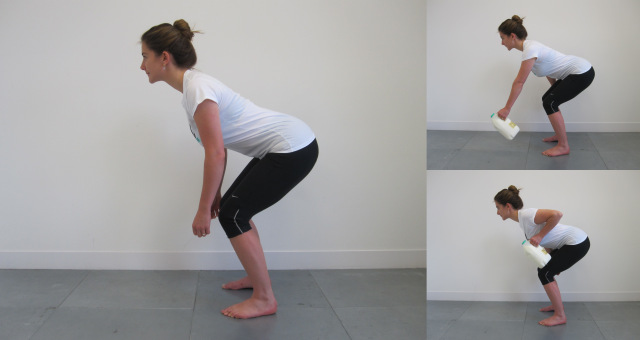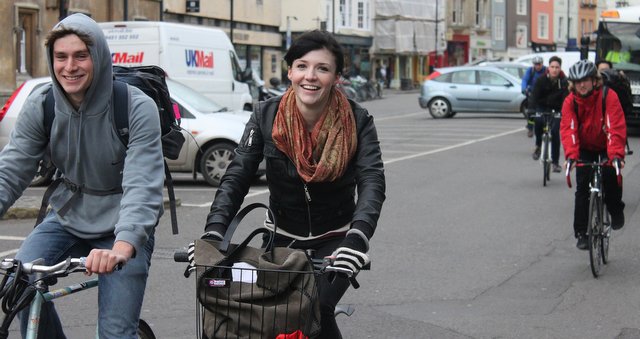
Your guide to training off the bike.
Lucy Fry is a London-based Personal Trainer and freelance journalist. Every month, Lucy will guide you through a different resistance training exercise, to help improve your performance on the bike.
Last month saw Lucy guide us through the front squat, now she’s back with the reverse lunge.
Giving you the lowdown on what each exercise is, how you do it, how it will help you on your bike and how to make it fit in with your life.
Cyclestrong #4
Introducing the reverse lunge
What is the reverse lunge?
The reverse lunge is a split leg movement, which predominantly works your hamstrings (back of thigh) and glutes (bum muscles).
Why cyclists need a little reverse lunge in their lives
Cyclists use their legs. A lot. This much we know. We also know that it’s very easy to become quad-dominant as a cyclist, so it’s good to train the glutes and hamstrings, which this movement does, in a big way.
It’s great for cyclists to train each leg separately in this way and redress imbalances. Because of the pedaling motion it’s important to have as near as possible identical strength in each leg so that one doesn’t get used more and then become over-fatigued and possibly injured.
How to: Reverse lunge
- Stand with feet together and arms by your side
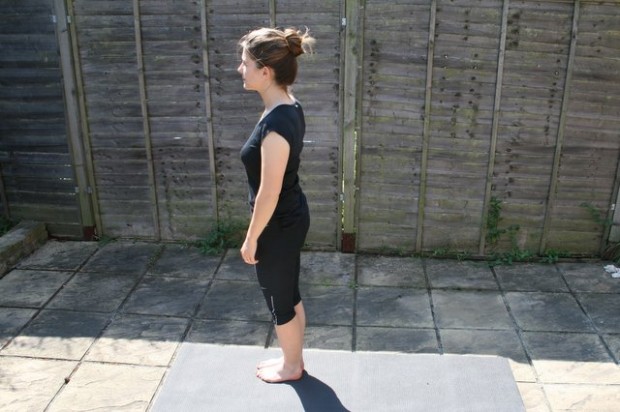
- Pull your shoulder blades back slightly to set good posture.
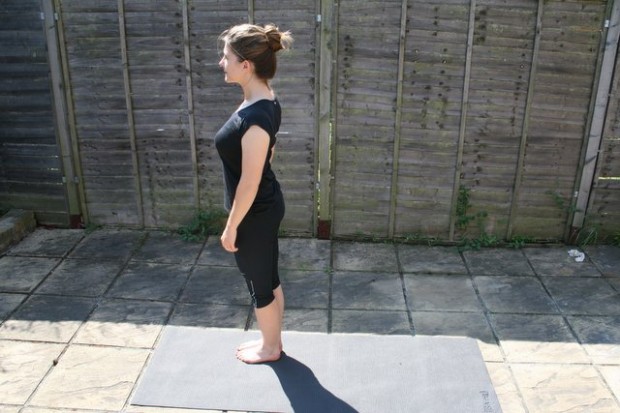
- With one leg take a large step back and bend the back knee until it almost touches the floor.

- Then, pushing through the heel of the stationery leg and contracting your glutes and hamstrings, power back up to standing.
- Repeat.
- After total reps on one side, do the other side.
That’s a set!
How many times and for how long?
For training general endurance in each leg, try 2-3 sets, starting at two and building up to three over time, because this is guaranteed to give you DOMS (Delayed-onset-muscle-soreness) if you haven’t done it before.
Do 12-15 repetitions on each leg. Trainers tend to use repetition ranges, because, if you’re pushing yourself hard enough (ie, in this case, holding enough weight) the first set will be 15 each, but then in the final set, it might be impossible to get the last couple out.
Variations (easier and harder):
Easier: Continue as above, just using your body weight as resistance.
Harder: use one dumbbell in each hand, and just increase the weight as you get stronger.
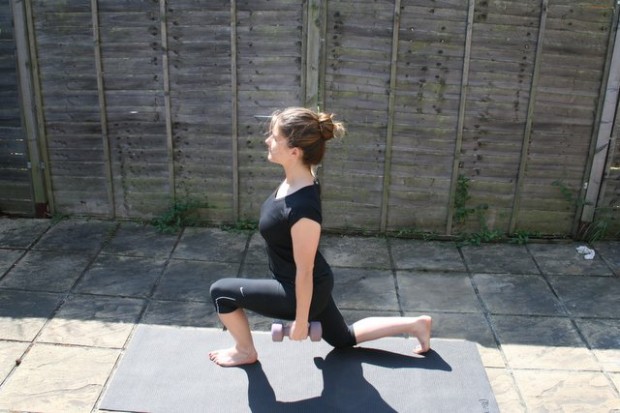
What does the reverse lunge work?
Lunges like these are great for core strength because they force you to stabilize (certainly in the last few repetitions); coming back up from the downward position is an awful lot easier and neater if you switch on your upper and lower abdominals.
Because it’s a single leg exercise (rather than, say, a squat where both legs move in the same way simultaneously), it helps to redress imbalances. Most of us have one side stronger than the other, so single leg (or single arm) exercises can begin to correct that, provided that you don’t do more repetitions on one side than the other! They also train power and increase ankle stability.
Why the reverse lunge is good for life
Who doesn’t look cool reverse lunging at a bus stop? Hey, you could even try a walking reverse lunge going backwards down the street (disclaimer: this may cause collision and potential embarrassment). Apart from increasing your street cred in general, the reverse lunge is awesome for building power, strength and anybody who just loves to feel the burn.
Can I reverse lunge at home?
This is probably one of the easiest exercises to do at home – all you need is enough space to lunge in, which is not a lot. If you want to add weight and really challenge your core strength as well as build strength in the legs, fill two shopping bags, with enough that you find it tough to get the last repetition out and hold one in each hand…
Lucy’s top tips for reverse lunges
- As with almost every exercise, switch on your abdominals.
- Make sure you power up on the return, using the hamstring and glutes.
- Do NOT place your hands on your knee to help get you back up to standing.
Lucy Fry’s Cyclestrong Series
- Deadlift
- Front plank
- Front squat
- Reverse lunge

